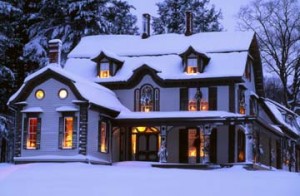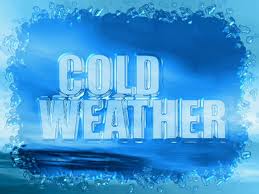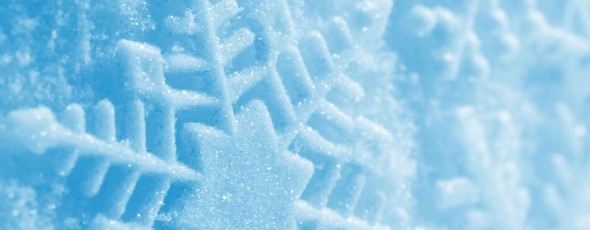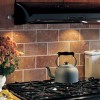By www.doityourself.com
Insulating and Sealing Up Your Home
One of the best ways to keep your home warm while keeping your bills down is ensuring that it is insulated and sealed as effectively as possible.
Attic: A well-insulated and ventilated attic will save you both on your heating bill and prevent ice dams. Consider adding a second layer of insulation to your attic. R-30 insulation is considered the minimum a home should have. Newer homes are more likely to conform to this minimum, but if your house is older it is probably time to add insulation.
Major amounts of heat can also be lost through cracks in the walls of your home, reducing the efficiency of your heating system and bumping up bills. Sealing your home up tight on both the interior and exterior is important to reduce the risk of drafts, leaks, dry rot, and mold.
 Windows: Now is the time to install your storm windows and doors, replacing any screens in your home. It is especially important to have storm windows if the windows in your home are older and not constructed of modern insulated glass.
Windows: Now is the time to install your storm windows and doors, replacing any screens in your home. It is especially important to have storm windows if the windows in your home are older and not constructed of modern insulated glass.
Look for cracks in your home around window frames, doors, pipes, and electrical outlets. You should seal up the open drafty cracks where air and wind can seep through as best as you can. On the interior, apply caulk around your window and door glass and trim. Other areas where cracks should be treated are around where the chimney and fireplace penetrate and the gaps around the dryer, bath, and kitchen vents.
Exterior: Check the siding on your house’s exterior, looking for cracks and gaps. Caulk and patch the cracks to prevent leaks and the damage that could result from them. Install or replace the weather stripping on all your windows and doors and any other areas where there are gaps. You can prime raw the siding of your house to temporarily waterproof it. You can seal brick exteriors with a high-quality masonry sealer in order to prevent the damage caused by the “freeze-thaw” process.
Fall is an ideal time to paint; however do not paint with latex paint when the temperature drops lower than 50 degrees Fahrenheit.
Insulate Pipes to Prevent Freezing:
As the winter approaches, you should make every effort you can to prevent the risk of your pipes freezing, which can cause a blockage of your water supply, and in the worst case, lead![frozen-pipe[1]](http://genesisrenovation.com/wp-content/uploads/2013/11/frozen-pipe1.jpg) to the breaking of your pipes. When pipes freeze the flow of the water is completely blocked. As water expands as it turns into ice, the pipes are very likely to burst. This can be an expensive problem to fix, and a disastrous occurrence in the frigid winter months. Not only outdoor pipes can freeze, pipes that may run along exterior walls or crawl spaces that are exposed to colder temperatures are at risk. Both hot and cold-water pipelines alike can freeze, so be sure to protect both.
to the breaking of your pipes. When pipes freeze the flow of the water is completely blocked. As water expands as it turns into ice, the pipes are very likely to burst. This can be an expensive problem to fix, and a disastrous occurrence in the frigid winter months. Not only outdoor pipes can freeze, pipes that may run along exterior walls or crawl spaces that are exposed to colder temperatures are at risk. Both hot and cold-water pipelines alike can freeze, so be sure to protect both.
Prevention: Begin to insulate your pipes early to prevent freezing, starting before freezing temperatures hit. You can insulate your pipes with foam rubber sleeves or fiberglass insulation, wrapping the insulating material around the pipes. For extra protection in the areas of your home that are not heated, pipes may first be wrapped with special heating strips, and then outer insulation wrapped on top of that.
If you home has faucets that are attached to the outside of your home, chances are that there is a turnoff valve somewhere on the pipe on the interior of your home. Turn off the water at this valve for the duration of the winter; if you do not have a switch, you should seriously consider installing one to save you trouble. Switch the valve shut, and then open the outside valve to drain out the remaining water. This will protect the pipes that lead to the outdoors from freezing.
Try to spot any trouble with your pipes before it’s too late, keeping your eye out for signs that may signify pipes that are beginning to freeze. Is the water pressure becoming reduced? There is a good chance the water in your pipes is starting to freeze and you should take action immediately.
If there is an especially cold spell and you fear your pipes are going to freeze, despite what efforts you have taken, there is still a last-resort trick. Leave one of your faucets, farthest from the supply of your home’s water, open and running slightly. If the water is running, it will be less liable to freeze, and the flow of the water should also work to thaw wherever the water already may have frozen in the pipes. It might be a waste of water, but in an extreme case it is a better alternative than a frozen, busted pipe on a freezing winter night.
Thawing Frozen Pipes: In most cases pipes will freeze overnight when it’s coldest, unfortunately sneaking up on you despite the precautions you took. Though this is a bad situation, there are some measures you can take yourself to thaw them. First check to see if the pipes are leaking or have burst. If this is the case then you will need to have the pipes repaired before you can attempt to thaw them.
You should first shut off the water supply to the problem pipe. If you do not have a valve for a specific frozen line, then you’ll have to shut off the water flow at the main water valve of your house. Open a couple faucets in order to provide a location for the melting ice to flow. There are quite a few methods you can use to thaw the pipes, but you must be careful that they are not heated too quickly and that the water in the pipes does not boil, as the pressure of the resulting steam could cause bursting. Be cautious that the pipes don’t become too hot to touch; in addition it is wise to wear protective gloves. If the pipes are plastic then use special caution as they are prone to melting. When you are thawing the pipes, work from the faucet end back toward the frozen area. Here are some do-it-yourself methods:
valve of your house. Open a couple faucets in order to provide a location for the melting ice to flow. There are quite a few methods you can use to thaw the pipes, but you must be careful that they are not heated too quickly and that the water in the pipes does not boil, as the pressure of the resulting steam could cause bursting. Be cautious that the pipes don’t become too hot to touch; in addition it is wise to wear protective gloves. If the pipes are plastic then use special caution as they are prone to melting. When you are thawing the pipes, work from the faucet end back toward the frozen area. Here are some do-it-yourself methods:
- Use a hairdryer, focusing on the frozen area of the pipe. Always remember to work from the faucet (or valve) toward the frozen area.
- Wrap rags around the pipe where it is frozen, and pour hot water on them. Make sure to keep pouring more hot water on the rags to keep them hot.
- Wrap a grounded heat-strip around the frozen pipe.
- Carefully direct a space heater to the frozen area of the pipe in order to thaw it out.
Here’s to a warm winter at your home!!!







